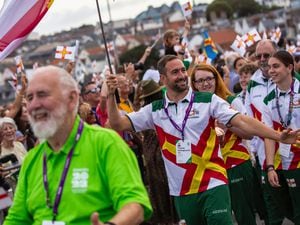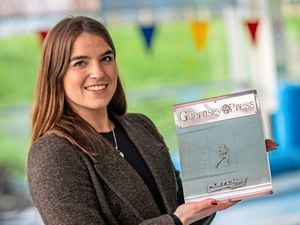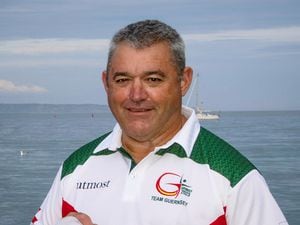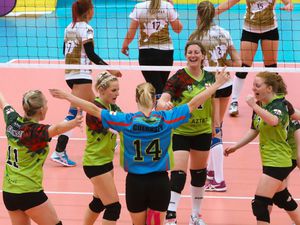Island Games: Get to know ... St Helena
‘YOU must hold your hand up when you’re driving down the road and you pass another car, regardless if you know who’s in the car or not.’
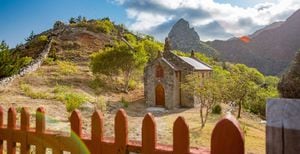
Perhaps it is St Helena’s isolation – stuck out in the Atlantic Ocean, almost 2,000km from the nearest continental landmass – that prompts ‘Saints’ to make the most of every opportunity for personal interaction.
It’s hard to imagine this working in Guernsey, with our busy traffic. But St Helena is not nearly as crowded, with half the population of the Castel on an island twice as big as Guernsey.
National Sports Association of St Helena chairman Simon Henry’s description of the friendly atmosphere and slow pace of life in the British overseas territory is based partly on his observations of the contrasts he experienced while working in England.
‘People will greet you in the street,’ he said.
‘In Oxford, if you go to the pub, you need to meet up with a friend or you will have nobody to talk to. If you go into a pub in St Helena, you can speak to anyone there and they will have a conversation with you.’
The art of conversation may have survived that little bit longer due to St Helena’s relatively late adoption of communications technologies.
The first TV service arrived in 1995 and the first mobile phone service reached St Helena just eight years ago.
The island’s economy was based almost entirely on the processing of one plant until the 1960s, with New Zealand flax being cultivated for rope and string.
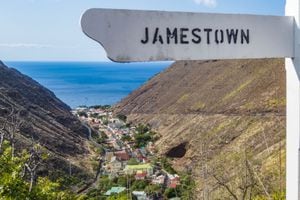
However, the economy has changed significantly in the last half-century, with non-fillet frozen fish and crustaceans making up 84% of export income in 2021 – with the USA as the principal market – followed by integrated circuits.
Simon used to have to take a month off from work in England in order to have two weeks at home, as the ship took a week to make the journey.
However, a UK-funded airport costing £250m. changed all that in October 2017, when the island’s first scheduled airline service saw Airlink land an Embraer jet there, which had flown six hours from Johannesburg, refuelling at Windhoek.
Simon told us this meant the island was now in a position to send its biggest ever team of athletes to Guernsey – albeit they’ll have to begin their journey flying in completely the wrong direction for half a day.
In the absence of a football tournament at Gibraltar 2019, the island took part in a 10-team football event which was held in Ynys Mon the same year but this will be the first time St Helena will be represented on the football field in a Games proper, with a men’s team derived from the island’s seven-team league.
They will also send three swimmers, a runner and a golfer but Simon’s own Island Games career as a shooter has been interrupted in favour of his team management role.
He competed in every Games at which shooting was included between 1999 and 2017, winning more than half of all the medals St Helena has ever won.
This is a testament to his own ability with a rifle but also his dedication to sport, as it costs about £3,300 per person to travel to the Games, much of which has to be found by the competitors themselves.
The island also sends teams to the Commonwealth Games and the Commonwealth Youth Games and has a cricket team competing in South Africa, which funds its own trips.
But, in Simon’s view, it is undoubtedly worth the cost and effort.
‘It is always a good opportunity for our athletes to train hard, work hard and then be selected to go to the Island Games and the Commonwealth Games,’ he said.
‘It just gives them the exposure to the facilities which we can only dream of. The island is so limited that it’s a privilege sometimes just to step out on the track or the field of play, knowing that maybe this is the only time you’re going to get to play on that level of equipment.’
About St Helena
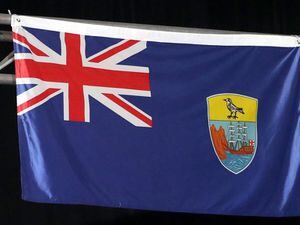
Area: 122 sq. km (47 sq. miles)
Population: 4,439 (2021 census)
Population density: 37 per sq. km
Time zone: One hour behind Guernsey
Distance from Guernsey: 7,290km (4,530m)
Total IG medals won: 11 (3 G, 3 S, 5 B)
Medals won in 2003: 0
Competitors coming to Guernsey: 23
Route: St Helena – Johannesburg – London – Guernsey, all by air
Sports in which competing: Athletics, golf, football, swimming
Biggest sports star: Simon Henry (shooting)
National delicacy: Plo – curried meat or fish (usually beef or tuna) with rice and vegetables, with the consistency of a paella
Parliamentary representation: 12 directly elected members of the Legislative Council, which also includes the Governor (appointed by the English monarch), the speaker and the deputy speaker

